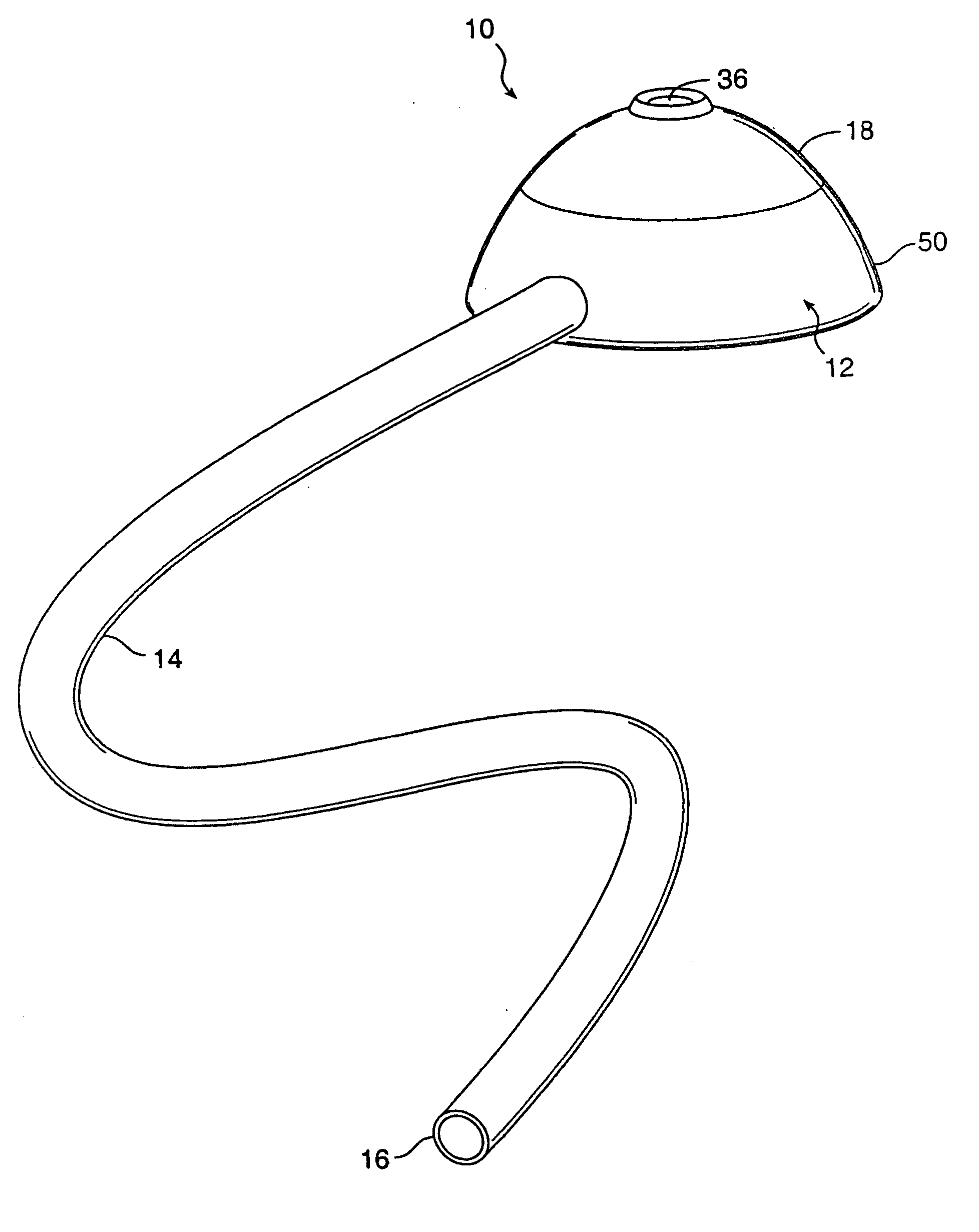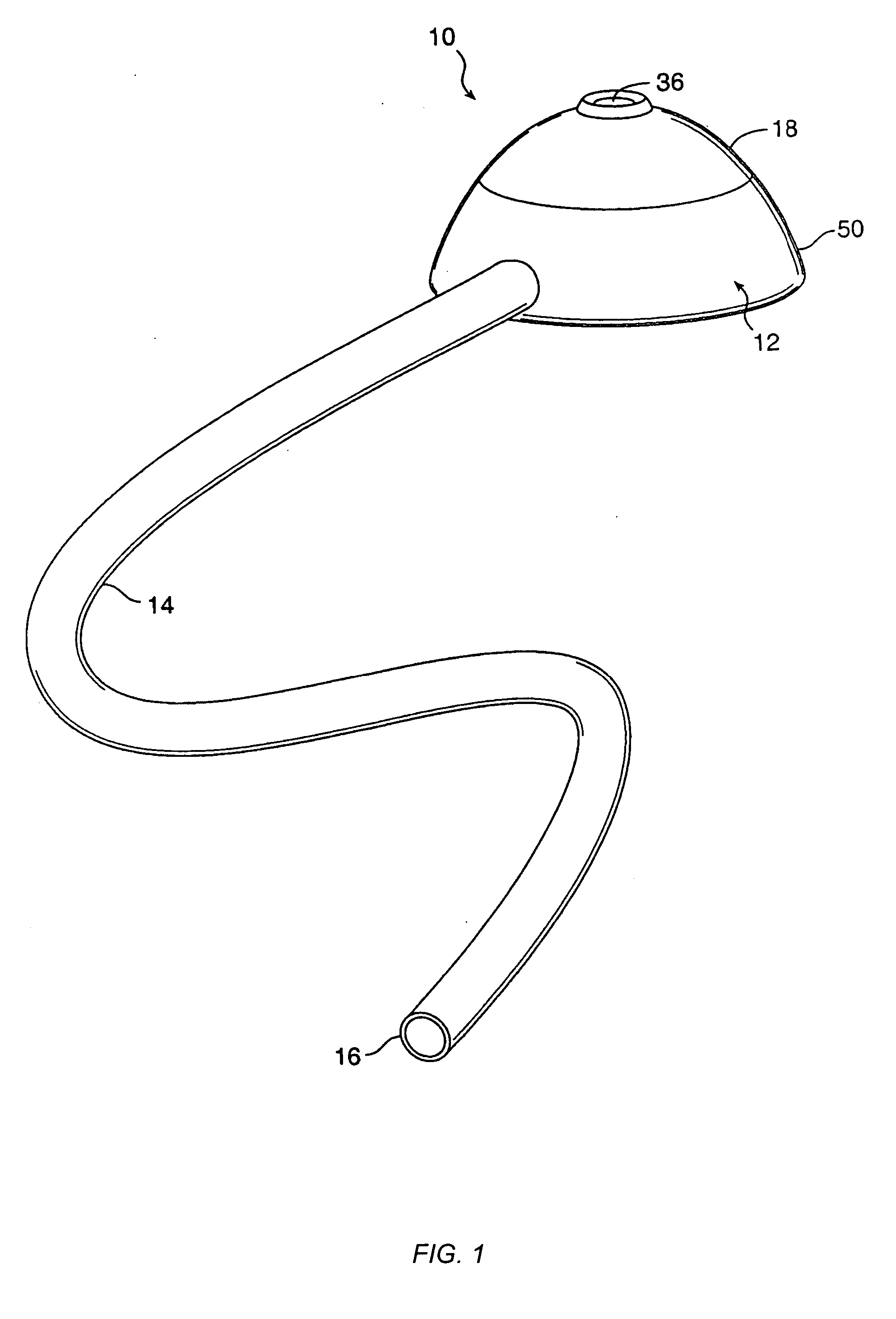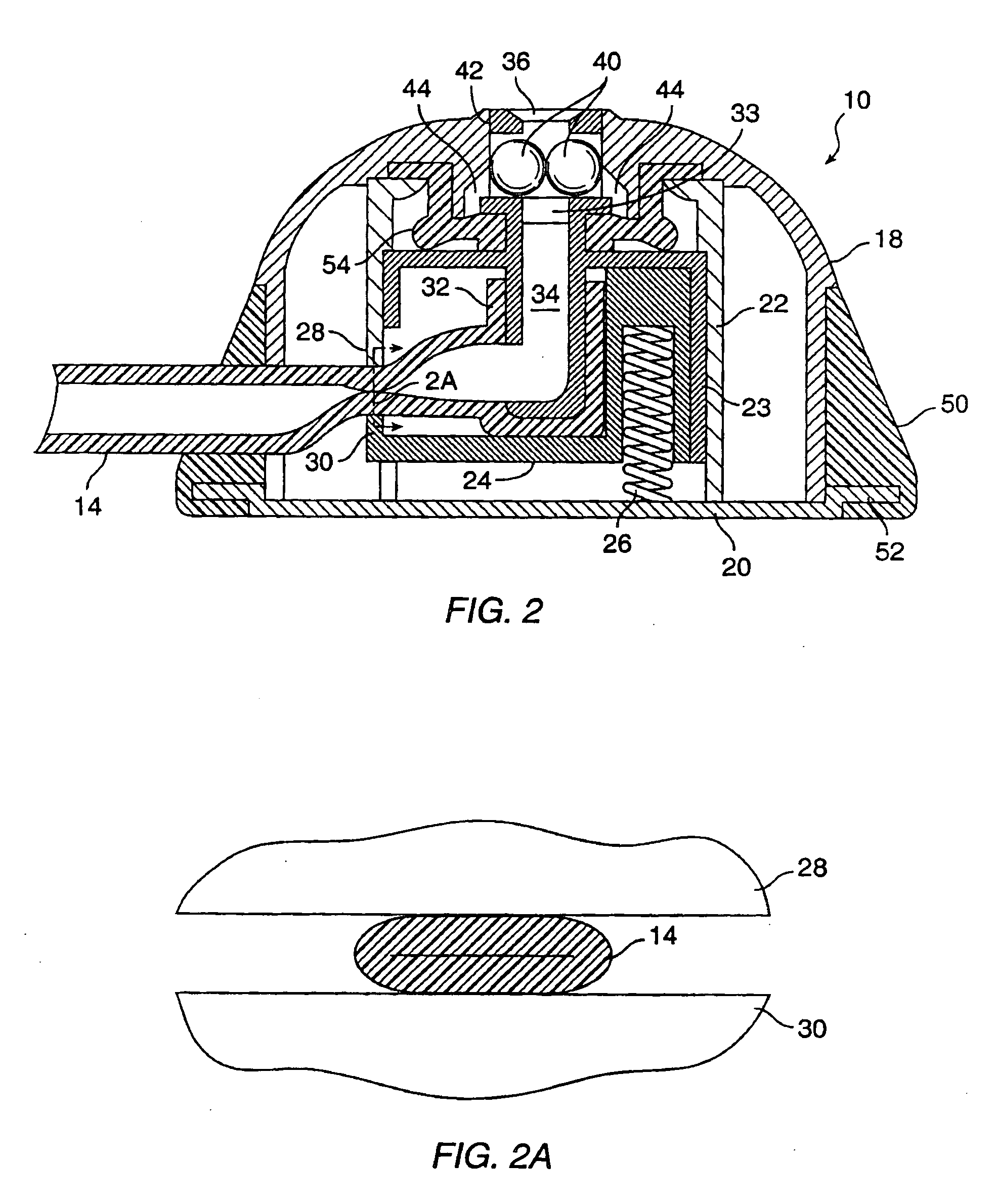Valve port and method for vascular access
a valve port and vascular access technology, applied in the field of implantable ports, can solve the problems of significant fluid loss, and achieve the effect of reducing the risk of blood loss and reducing the variability of access
- Summary
- Abstract
- Description
- Claims
- Application Information
AI Technical Summary
Benefits of technology
Problems solved by technology
Method used
Image
Examples
Embodiment Construction
[0029] The present invention provides methods and apparatus for facilitating percutaneous access to a body lumen of a patient. Exemplary body lumens, include blood vessels, the peritoneal cavity, and the like. The methods are particularly useful for accessing blood vessels, including both arterial blood vessels and venous blood vessels. While the remaining description is directed particularly at blood vessels, it will be appreciated that the invention applies to all body lumens and cavities where selective percutaneous access might be desired. For example, the ports can be used for introduction and removal of dialysate in peritoneal dialysis procedures. Access ports according to the present invention are implanted subcutaneously so that a passage therein lies a short distance beneath the surface of the patient's skin, typically being within 3 mm to 20 mm of the skin's surface. An access tube may then be percutaneously inserted into the passage in the access port in order to provide ...
PUM
 Login to View More
Login to View More Abstract
Description
Claims
Application Information
 Login to View More
Login to View More - R&D
- Intellectual Property
- Life Sciences
- Materials
- Tech Scout
- Unparalleled Data Quality
- Higher Quality Content
- 60% Fewer Hallucinations
Browse by: Latest US Patents, China's latest patents, Technical Efficacy Thesaurus, Application Domain, Technology Topic, Popular Technical Reports.
© 2025 PatSnap. All rights reserved.Legal|Privacy policy|Modern Slavery Act Transparency Statement|Sitemap|About US| Contact US: help@patsnap.com



